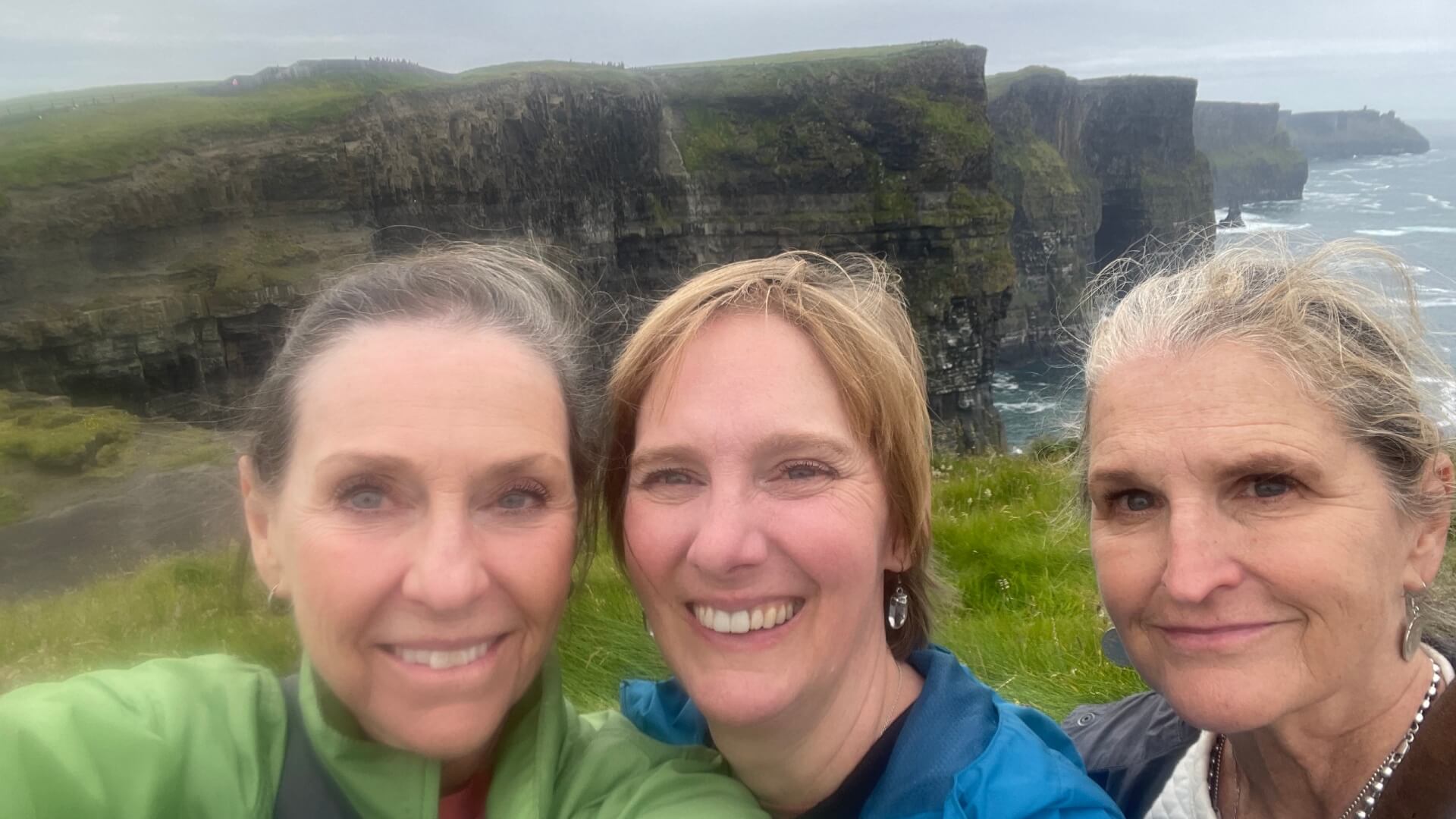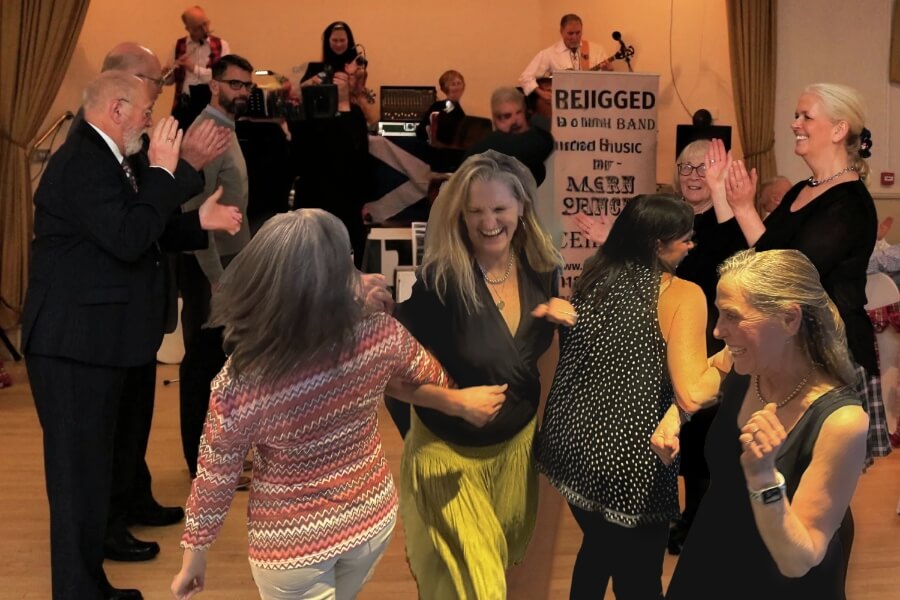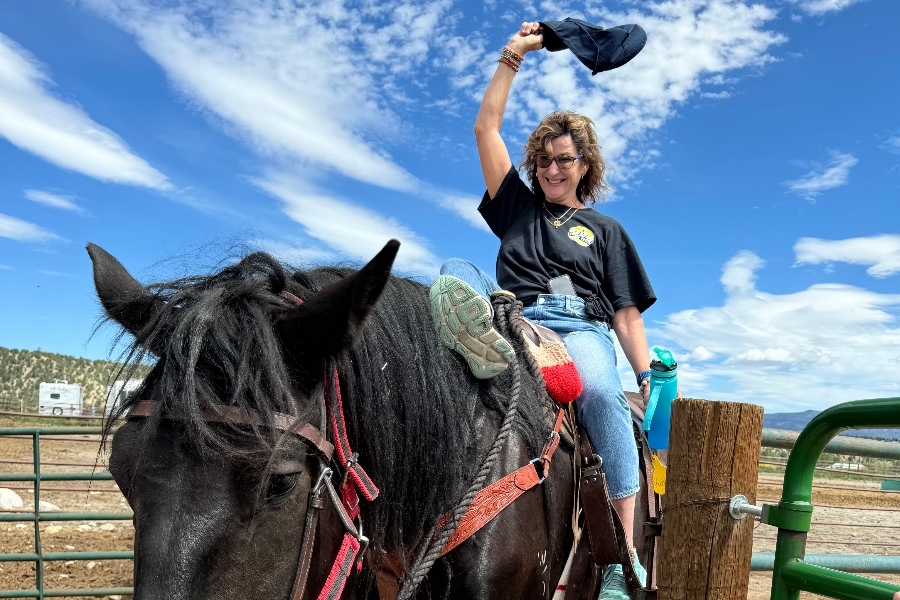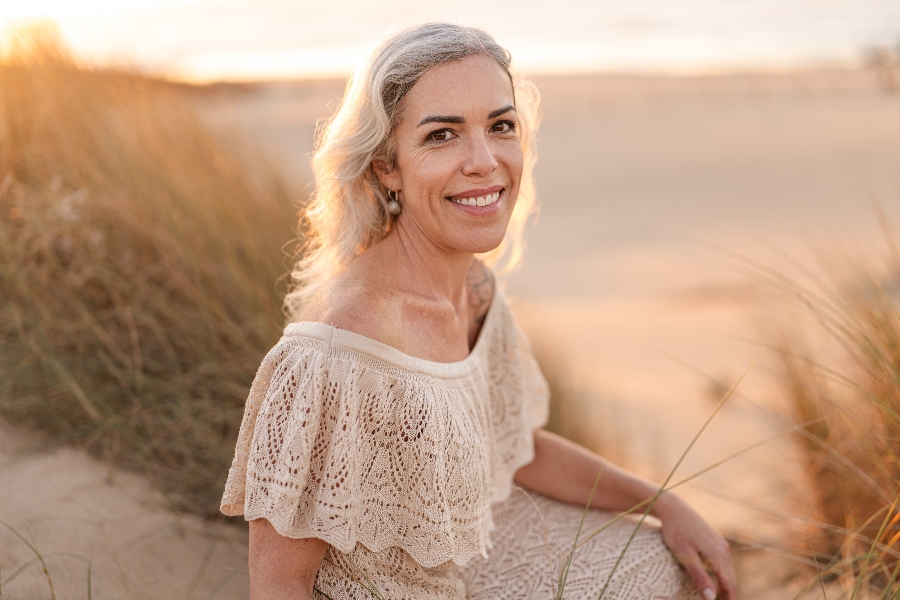I had postponed having a bone density scan for four years, rationalizing that it was a moot point since I had no intention of taking any of the osteoporosis medications. My refusal to jump on the bone-med bandwagon stemmed from a flurry of reports of nasty side effects (in rare cases, thighbone fractures, deterioration of the jawbone) a few years back—and my belief that I would experience them all. I was in complete denial that I was at even greater-than-usual risk for osteoporosis due to the medication I took for five years to reduce my risk of a recurrence of estrogen-dependent breast cancer. I figured I’d take my calcium and vitamin D and exercise, and I’d be just fine. La di da.
Well, I’m not fine. In February of this year, I finally had a bone density scan done. The results? My spine is solidly in osteoporosis (“porous bone”) territory, meaning my risk for a fracture due to a fall or even, in severe cases, coughing or sneezing, increases significantly. How’s that to make a person feel old and frail?
Could You Have Osteoporosis?
Watch out! Half of all women over age 50 will break a bone because of osteoporosis, according to the National Osteoporosis Foundation. So you want to diagnose and treat the problem to avoid becoming a part of that sad statistic. Before you reach the osteoporosis danger zone, you have what’s called osteopenia, meaning that you’re losing bone faster than you’re making it. To get a snapshot of your bone health and where you fall on the spectrum of bone loss, you’ll need to have a bone-density scan—either by dual-energy x-ray absorptiometry (DXA) or bone densitometry, an enhanced form of x-ray that scans your hips and spine and perhaps more. It takes all of 10 minutes, and you should start getting them at age 65, age 50 if you’re already at increased risk for fractures.
What exactly does “increased risk” mean? There are many factors—you’ve reached menopause; have a family history of hip fractures; are white or Asian; have rheumatoid arthritis; are a current smoker; drink three or more alcoholic beverages a day; have low calcium intake; are undergoing chemo or take anticoagulants and certain other medications; have had weight-loss surgery; or have a thyroid imbalance.
The scores from a bone density scan show up as negative numbers (T scores) in most women, so even when they’re good, they can be confusing. Further complicating matters, T scores are not a single number but refer to specific areas of the body. You can, like me, have osteoporosis in one spot, like vertebra #3, but not in vertebra #1 or anywhere else. But osteoporosis in any single area demands attention and treatment.
When Bones Become Brittle
You won’t feel the stealth Swiss-cheese effect on your bones until something goes wrong. The mind-blowing stats are that 20 to 30 percent of people who fracture a hip die within a year. Of those who survive, half need help bathing or dressing; one in four require long-term care.
Yeah, it sucks, but for women over 50, bone loss is almost as inevitable as death and taxes. But there are plenty of misconceptions about how to minimize risk. A survey of women 50 years and older found that 24 percent believed there was no way to build new bone at their age; 18 percent felt they could not do much to reduce the risk of fracture at their age. Both of these beliefs are untrue, as we’ll get back to in a minute.
And then there’s the emotional obstacle, says Laura Tosi, MD, director of the Bone Health Program at the Children’s National Hospital and past chair of Women’s Health Issues Committee of the American Academy of Orthopedic Surgeons. If we admit we have osteoporosis, we’re admitting that we’re old. On a positive note, she says, “Patient osteoporosis-advocacy organizations are pushing for Medicare funding for ‘fracture liaison services,’ which could provide the much-needed education and follow-up if you’re on Medicare.
Shrinking With Age: “What Do You Mean I’m An Inch Shorter Than I Used To Be?”
Making Your Way Through the Bone-Medication Maze
As with most medical conditions, there is no one-size-fits-all prescription. In fact, it can be dizzying to puzzle out who should get which medication and for how long. The information here won’t provide you with a clear takeaway prescription but will hopefully arm you with enough information so you can ask questions and make the best decision along with your healthcare provider.
One of the biggest problems in making bone medication recommendations, says Tosi, is that women are disproportionately afraid of side effects and are opting out of treatments. But taking medication can play a key role in warding off bad breaks in the future.
There are four main types of bone medications; here’s a closer look (also see the chart below):
Bisphosphonates
These include Actonel, Boniva, Fosamax (which are all pills) and Reclast and Zometa (which are IV infusions) are often prescribed to stop bone loss. All but Zometa have generics, which are considerably cheaper than the brand-name versions.
Selective Estrogen Receptor Modulator (SERM)
This is a long name for a drug that both mimics and blocks estrogen in different tissues. Evista is a SERM, a pill taken once a day to improve bone density and prevent bone loss. In addition, it has been shown to reduce the risk of breast cancer.
Parathyroid-Hormone-Like Drugs
This class of drugs are synthetic versions of the parathyroid hormone, which regulates calcium levels in the blood. They are self-injected and shouldn’t be used for more than two years. The drugs increase bone density and reduce the risk of bone breaks.
Monoclonal Antibodies
Antibodies such as Prolia actually build bone; these medications are best for those with osteoporosis or who have osteopenia and have broken a bone. Prolia is an injection once every six months for two years; when you stop taking it, your risk for fractures shoots up and your doc will likely recommend “sealing the deal” with a bisphosphonate. Earlier this year, another monoclonal antibody, bone-building medication, Evenity, was approved by the FDA, but it requires a monthly injection by a health professional for one full year (more hassle, more money). Neither Prolia nor Evenity has a generic, so they’re very pricey.
Speaking of price, the cost of these drugs varies greatly and coverage is left, of course, to the whim of your health insurance plan. Generic bisphosphonates, like a generic form of Fosamax, are cheap. Many of the pharmaceutical companies offer deeply discounted coupons on their websites for, say, Prolia or Evinity, but make note—in a bit of warped irony, if you’re on Medicare, the coupons won’t work. Medicare generally pays about 80 percent of the cost (sticker price is a “mere” $1,825/month for Evenity), but how much you end up paying depends on whether you have supplemental insurance or a Medicare Advantage plan.
Read More: Why Frozen Shoulder Is a Feminist Issue
What Women Think of the Meds
Doctors vary quite a bit in their approach to treating osteoporosis with medications, and women respond differently to the options. Susan Male, a hospital worker from New Jersey, started off with Actonel, but it made her existing heartburn worse. She just recently started Prolia infusions, and her concern is typical. “I was worried starting this because if you have side effects, you can’t ‘stop’ it for another six months.” [The drug stays in your system for six months.] And she says her doctor disagreed with what she had found in her own research. “I thought I should take Evista, which particularly helps spinal bone, which is where I have osteoporosis. I went to my primary care doc, an internist, and he said ‘Don’t take Evista. Either stick with Actonel longer or try the Prolia.’ So, who knows? It’s a crap shoot.” She’s still waiting to find out how much her insurance will cover and whether the medication has helped.
Danna Walker, a Maryland-based journalist, was on Fosamax for 10 years before her doctor took her off. But she says she never had any side effects. Now, she says, “My bones are okay with exercise and HRT.”
Wila Phillips, an Austin-based writer, tried Boniva, but it caused stomach pain. She has been on Prolia for five years and has had a significant improvement in her T scores. She was told by her doc that she can take it indefinitely.
Jenn Fox, a Michigan writer, has been on Fosamax, Reclast, Tymlos, and Prolia but says she has not been great about following up with her doctors, in part because of her misgivings about taking the medications. Fox’s reluctance is more common than not. Turns out that among women taking Prolia, nearly half stop within one year. That’s not enough time to have the medication work its bone magic.
“There is concern about very rare side effects that is disproportionate to the actual risk,” says Michael Econs, MD, Director, Division of Endocrinology and Metabolism at Indiana University School of Medicine and past president of the American Society of Bone and Mineral Research. “For every femoral fracture [the medication causes], you prevent over 100 hip fractures and many more vertebral fractures.”
Taking a Vacation From Osteoporosis Medications
For some bone medications, if you take them for too long your bones can actually become too dense, the opposite of osteoporosis, making them brittle. While expert opinions and pharmaceutical companies’ recommendations vary, some experts recommend taking a “drug holiday” after two to five years. Some women I interviewed were told to stop bisphosphonate after 10 years, while others were told that taking the drug indefinitely was fine. And with medications like Prolia, you can’t go “cold turkey.” Once you stop, you’ll need to take a bisphosphonate to hang on to the new bone you’ve built and keep bone loss in check. There is no unified voice on taking medication vacations. It’s something every woman has to decide on their own, based on their unique situation, with input from their healthcare provider.
So, Why Isn’t Every At-Risk Woman Being Treated?
We have an easy diagnostic tool, along with a choice of readily available medications, including some that don’t cost an arm and a leg, that are known to stop bone loss and build bone. So why are fracture rates increasing among older women (they are) and why aren’t more of us being treated (we aren’t)? Turns out the problem is two-fold. According to Dr. Tosi, both doctors and patients stand in the way of diagnosis and treatment. She says primary-care doctors are generally overworked and may not have time to educate, treat, and follow-up with osteoporosis patients. And, she says, a lot of doctors are wary of these drugs and their potential complications.
“Unfortunately, the lawyers went crazy on bisphosphonates,” says Tosi. “But almost all of the necrosis of the jaw cases were in patients who were on extraordinarily high doses of bisphosphonates for cancer. And the femur fractures [associated with bisphosphonates] are profoundly rare.” But she also says that preliminary findings may be coming out soon that will better identify who is most at risk and help make these side effects even more rare.
Better Safe Than—Well You Know the Rest
While regular weight-bearing exercise and taking calcium (1,200 milligram/day) and vitamin D (600–800 International Units a day) are all important, they are only a small part of preventing bones from breaking. Research suggests that the real bone benefit of these two bone-building nutrients comes when you’re young and your bones are still forming. You should still take these supplements, which help support healthy bones. Two popular options that deliver calcium and vitamin D are Viactiv and Caltrate.
Even if you’re taking the recommended amounts of calcium and vitamin D, and even if you’re taking one of the bone medications, you’ll need to be mindful of fracture risk and watch your step. Literally. Some of the advice may seem common sense, even a bit condescending, but once you’ve passed age 50, it’s important to heed it:
- You love your pup, but if he’s a puller, he’s putting you at risk. Turns out walking your dog, especially a large dog, is a risk factor for falling and breaking bones.
- Get rid of those area rugs in the house. One slip is all it takes.
- Don’t walk on wet floors. Ever!
- Never try standing on a chair with wheels or a wobbly step ladder (“just this once”) to get something out of a cabinet or to change a light bulb.
- Get a tub mat. Even if you’re super steady on your feet, soap and shampoo can leave a tub slick enough for anyone to slip out and fall.
- No high-impact activities, like jogging, running, jumping rope. Walking is good for your bones, but only if you watch your step. No texting while hoofing it.
- Modify your yoga and Pilates moves. Avoid full-forward or backward bending, handstands, extreme twists, and knees-to-chest poses. Check YouTube for videos on how to play it safe.
Read More: Got a (Real) Pain in the Neck? 6 Ways to Get Rid of It
On a Personal Note
So, what about me? Well, I’m a convert. Taking a bone medication is something I have to do. I’ll get regular bone density scans to see how I’m doing. I’ve still got lots of things I want to do and places to go, and I don’t want my plans thwarted because of making a misguided decision about my bone health.
The Lowdown on Bone-Building Medications
The medications in the chart are the ones you’ll most likely be prescribed by your healthcare provider. There are others, but they are generally for people who are unable to take these. For more details on all the bone meds, check out National Osteoporosis Foundation.
For more information on how to maintain bone health, check out www.americanbonehealth.org, where you can use the Bone Fracture Risk Calculator to see where you stand.
[supsystic-tables id=1]























0 Comments